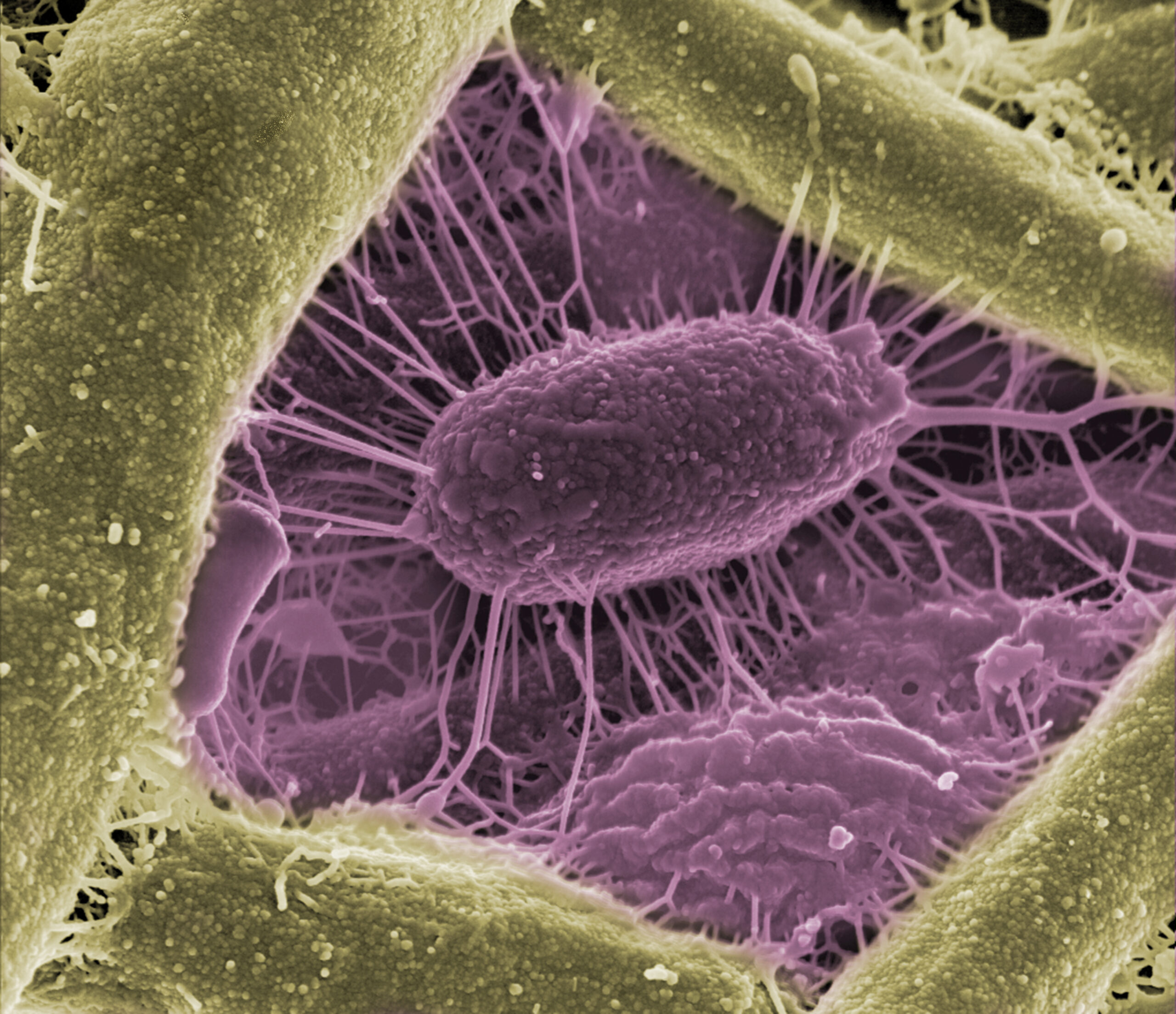2015
Microbes on Arabidopsis Roots

A magnified view of a microbe on Arabidopsis plant roots seemingly provides a “window” into the rhizosphere, or root zone. In fact, that’s exactly what a multi-institute research campaign is trying to frame—a view into the world of soil, roots and microorganisms. The image was obtained at EMSL, the Environmental Molecular Sciences Laboratory, a U.S. Department of Energy Office of Science national scientific user facility located at Pacific Northwest National Laboratory. The campaign includes scientists from EMSL, Pacific Northwest National Laboratory, DOE’s Joint Genome Institute, Brookhaven National Laboratory, and the Universities of Minnesota and Missouri. Funded by DOE’s Office of Biological and Environmental Research, the study examines carbon presence and distribution within the root zone, and impacts to rhizosphere microbial community diversity and functions. Results could surface climate and environmental solutions.
Research team members: Ljiljana Paša-Tolić, Charles Ansong, Heather Brewer, Alice Dohnalkova, Abigail Ferrieri, Kim Hixson, Meng Markillie, Angela Norbeck and Galya Orr of PNNL’s Earth and Biological Sciences Directorate; Susannah Green Tringe (DOE-JGI), Richard Ferrieri (BNL), Mike Sadowsky, Chanlan Chun and Christopher Staley of the University of Minnesota; and Gary Stacey, Yaya Cui and Lihui Song of the University of Missouri.
The image was captured with a Helios Nanolab dual-beam focused ion beam/scanning electron microscope at EMSL and colorized by Alice Dohnalkova.
Courtesy of Pacific Northwest National Laboratory.